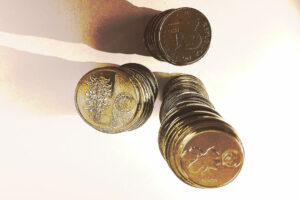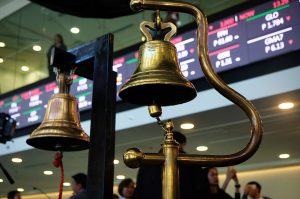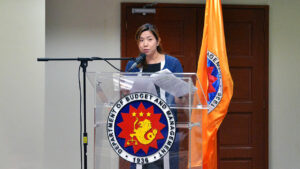YIELDS on the central bank’s term deposits were mixed on Thursday as the offer went undersubscribed after the US Federal Reserve kept rates steady for a seventh straight meeting and signaled just one rate cut this year.
The BSP’s term deposit facility (TDF) fetched bids amounting to P240.791 billion on Thursday, below the P310 billion on the auction block as well as the P293.309 billion in tenders for a P290-billion offer seen a week ago.
This week’s TDF auction was moved from the usual Wednesday schedule due to the Independence Day holiday on June 12. The tenors offered were also adjusted accordingly.
Broken down, tenders for the six-day papers reached P124.448 billion on Thursday, lower than the P150 billion auctioned off by the central bank and the P139.331 billion in bids for a P140-billion offering of eight-day papers seen the previous week.
Banks asked for yields ranging from 6.5125% to 6.55%, slightly narrower than the 6.5% to 6.55% band seen a week ago. This caused the average rate of the one-week deposits to increase by 0.12 basis point (bp) to 6.5357% from 6.5345% previously.
Meanwhile, bids for the 13-day term deposits amounted to P116.343 billion, below the P160-billion offering and the P153.978 billion in tenders for P150 billion in 14-day papers placed on the auction block on June 5.
Accepted rates for the tenor were from 6.5588% to 6.598%, wider and higher than the 6.55% to 6.5895% margin seen a week ago. With this, the average rate for the two-week deposits slipped by 0.12 bp to 6.5749% from 6.5761% logged in the prior auction.
The BSP has not auctioned off 28-day term deposits for more than three years to give way to its weekly offerings of securities with the same tenor.
The term deposits and the 28-day bills are used by the BSP to mop up excess liquidity from the financial system and to better guide market rates.
Term deposit yields were mixed on Thursday following the US central bank’s policy meeting, with the updated Fed dot plot indicating just one rate cut for 2024 versus their previous view of three, Rizal Commercial Banking Corp. Chief Economist Michael L. Ricafort said in a Viber message.
The Federal Reserve held interest rates steady on Wednesday and pushed out the start of rate cuts to perhaps as late as December as policy makers sketched out their view of an economy that remains virtually unchanged across its major dimensions for years to come, Reuters reported.
With growth and unemployment lodged at levels better than the US central bank considers sustainable in the long run, Fed Chair Jerome H. Powell said policy makers were content to leave rates where they are until the economy sends a clear signal that something else is needed — through either a more convincing decline in price pressures or a jump in the unemployment rate.
So far, Mr. Powell noted in a press conference after the end of a two-day policy meeting, inflation had fallen without a major blow to the economy, and he said there was no reason to think that can’t go on.
“These dynamics can continue as long as they continue,” Mr. Powell said. “We’ve got a good strong labor market. We think we’ve been making progress toward the price stability goal. We’re asking … is our policy stance about right? And we think yes, it’s about right.”
The result is the Fed accepting a slow expected decline in inflation back towards its 2% target, with the central bank’s preferred inflation measure — the personal consumption expenditures (PCE) price index — virtually unchanged at the end of this year from its current level and the number of rate cuts held to a single quarter-percentage-point reduction.
Those rate reductions are projected to gather pace next year, with Mr. Powell deferring on the timing.
Mr. Powell himself said the decision about the rate path was a “close call” for many policy makers, and that to some degree the Fed had merely traded an earlier start to rate reductions this year by tacking an additional anticipated cut onto 2025.
Still, he called the decision to start policy easing “consequential,” and the drop in expectations for this year completes a broad swing in sentiment from just six months ago when policy makers in their December 2023 forecasts envisioned an imminent kickoff to three years of steady rate reductions.
Under the current projections, absent a surprise in upcoming inflation or jobs data, the cuts would likely not begin until December, moving the Fed’s decision out of the Nov. 5 US presidential election cycle.
The Fed raised rates aggressively in 2022 and 2023 to the current 5.25%-5.5% range to curb inflation that had surged to a 40-year high in the aftermath of the COVID-19 pandemic.
Meanwhile, BSP Governor Eli M. Remolona, Jr. earlier said that while the Monetary Board closely monitors the Fed, their own policy decisions are independent of those made by the US central bank.
Mr. Remolona this month reiterated that they could begin their easing cycle earlier than the Fed, with one or two cuts likely by the second semester as they have become less hawkish than before.
The BSP has kept its policy rate at a near 17-year high of 6.5% since October 2023 following 450 bps of hikes to tame inflation. — Luisa Maria Jacinta C. Jocson with Reuters





